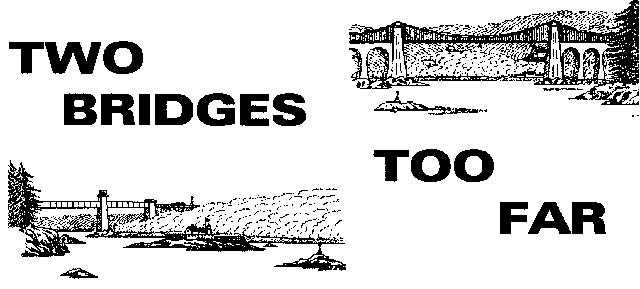The tide enters the Irish sea from the north and south of Ireland, and meets and separates in the vicinity of a line between Morcambe Bay and Dundalk, leaving both coastlines south of Dublin and Liverpool firmly in the zone of the tide from the south. High Water Liverpool occurs about six hours after HW at Cobh and the Lizard, and the tide as it rises enters the Menai Strait from the southwestward.(see Co-Tidal chart) However the severe physical restrictions of its narrow and shallow southwestern entrance (see Anglesey Pilot page 20) inhibits the full development of the tide in the Strait,(Admiralty Pilot Vol 37) so the tide isn't rising in the Strait as fast as it is in the surrounding Irish Sea, and an hour or two into the new young flood the tide in the northeastern entrance starts to overtake the height of the water back down the Strait. (Mean spring tidal conditions in the Menai Strait) This naturally means the tide will now want to start to enter from the north, but for a while this is resisted by the inertia of the stream which the even higher water level outside the southwestern entrance continues to press strongly northeastwards through the length of the Strait. The effect is thought to heap up the water somewhere in the Bangor end of the Strait,(Admiralty Pilot Vol 37) which increasingly precarious heap is pressed ever westwards by the mounting disparity in water levels, and is further destabilised on encountering the highly irregular underwater topography between the two bridges. But about this time the flood at the southwestern end is all but spent, and no longer able to resist this mounted potential from the north. So while the Strait starts to fill through its southwestern entrance, the last hour and a half of the flood comes in from the north, and in between the flood stream running one way and the flood stream running the other is what the Admiralty Pilot describes in untypically venturesome language as: "A brief period of uneasy uncertainty while the water doesn't know which way to go", and it's local practice in the Strait to call this period slack water, or more commonly 'The Slack'.
